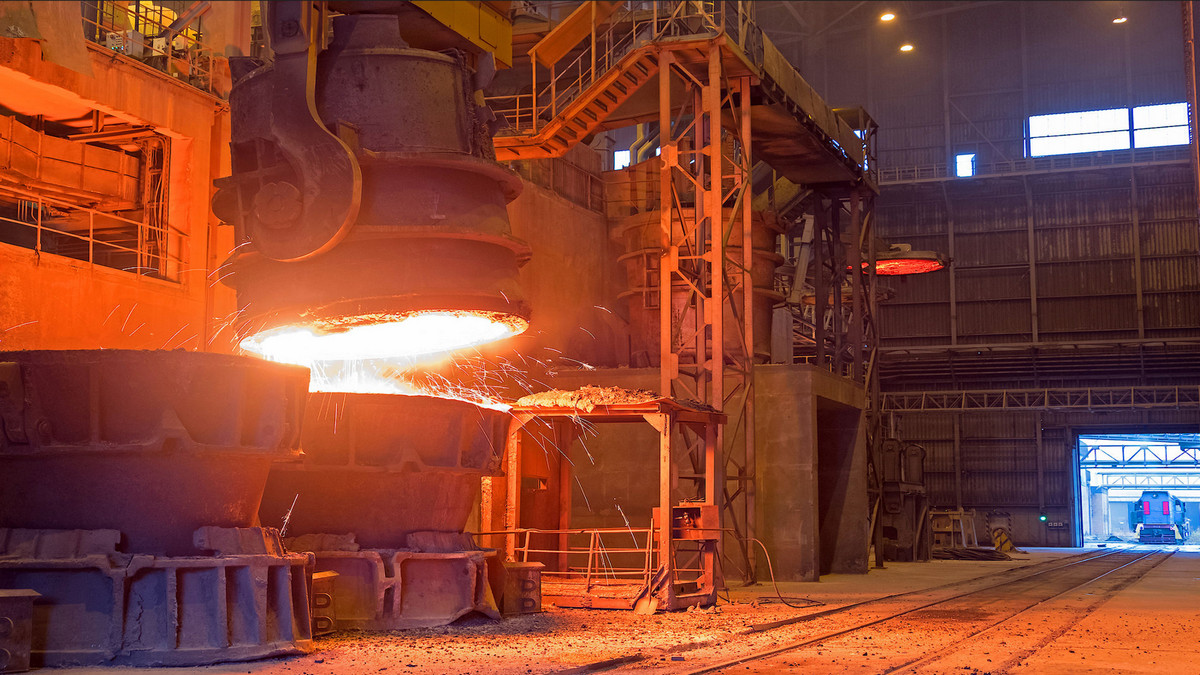The process of pouring molten metal into a mold cavity in the shape of casting, and taking out the finished product after the metal is cooled, is commonly known as sand casting, also known as sand casting. Each sand mold can only be used once, which belongs to destructive casting. Mainly cast steel, aluminum alloy, and copper.
What is Casting?
Casting can be used for mass production, but due to the improvement of casting molds, through casting technology, it can also be used to produce castings with smooth surfaces and precise dimensions and can be used to improve the mechanical properties of materials. Therefore, almost all metals or alloys that can be melted can be used for casting.
The materials of the mold include metal, gypsum, ceramics, and various heat-resistant materials. Although the use of sand molds is not as much as before, the basic principles and techniques of sand mold casting are still referenced and followed by various new casting technologies today.
What is Sand Casting?
Sand casting is a metal casting process that uses sand as the molding material. A factory specializing in sand casting is generally called a foundry. Castings produced with sand molds account for more than 80% of castings produced with various casting molds.
Sand Casting Process:
The sand used in sand casting is relatively inexpensive and has sufficient refractoriness to be used even in cast steel. In addition to sand, a properly proportioned binder is usually mixed or present in the sand. Water is usually added to the sand mix, but other substances are sometimes added to alter the strength and plasticity of the clay to produce the right degree of polymerization for molding. Sand is usually contained in a frame system or using mold boxes or sandboxes. Foundry cavities are created by compressing the sand around the model, using a pattern plate, or directly engraving on the sand mold.
The basic steps:
- Place the template to make a model.
- Include the pattern and sand into the pouring system.
- Remove the stencil.
- Filling the cavity with molten metal, preparation, and melting the metal material.
- Pour the liquid metal and wait for the metal to cool.
- Break the sand mold, remove the casting, and clean the casting.
What are the Advantages of Sand Casting?
- The mold cost is relatively low.
- Sand turning is suitable for medium and low-volume production.
- A small batch of the same product can be quickly produced in a short time.
- The sand-casting mold can be large or small, and can produce a single large casting.
- Product diversification and high production flexibility.
- Either mechanized or manual production is acceptable.
What are the Common Sand-casting Methods?
- Die casting:
- Hot chamber method: Suitable for non-ferrous metals tin, lead, and zinc with a low melting point.
- Cold room method: Suitable for non-ferrous metals such as aluminum, magnesium, and copper with a low melting point. Commonly used in automotive aluminum alloy steel rings, gearboxes, or magnesium alloy computer casings.
- Low-pressure casting:
The cast castings are relatively dense, pure in quality, accurate in size, high in yield, and less in scrap loss.
- Gravity casting:
The cast castings have the advantages of no sand, smooth surface, accurate size, no pores, and fine structure. The manufacturing cost is high, the model structure is more complex, and it is only suitable for small and medium-sized castings. Manufacturing parts include automobile and locomotive pistons, tire aluminum rings, and other aluminum and copper castings.
- Lek casting:
Hollow castings can be made without sand cores, so it is called centerless casting. Most of them are low melting point alloys such as lead and zinc. For the manufacture of statues, decorations, and other hollow castings.
- Centrifugal casting:
Also known as precision casting, it is difficult to process thin walls and complex shapes or small castings. Centrifugal casting is not limited to the symmetry of castings, and it can be produced in multiple modes at the same time and can be produced in large quantities.
- Lost wax casting:
The size of the casting is accurate and the surface is smooth, which is suitable for castings with complex shapes. For turbine upper blades, medical-artificial joints, silver teeth, and products with limited dimensions.
What are the Common Molding Methods?
- Bench Molding: Molding on a bench of appropriate height, suitable for small castings.
- Floor Molding: Molding on the ground, suitable for large castings.
- Pit Molding: The mold cavity is made in the pit to replace the lower flask, which is suitable for oversized castings.
- Machine Molding: Use machines to hammer sand, flip sand molds, make gates and take molds.
What are the Gating System and its Solidification Characteristics?
The channel through which molten metal flows into the cavity is called the gating system, including the pouring basin, sprue, and pouring gate. Since the purpose of the gating system is to guide the liquid metal into the cavity, the following points must be paid attention to in the design:
- Turbulence should be minimized as the liquid metal enters the cavity.
- The gating system must be able to control the flow of liquid metal or use dry sand cores to adjust the flow of liquid metal to avoid collapse of the flow path or mold cavity.
- Once the metal enters the cavity, it is desirable to have some desired direction of condensation.
- All slag or impurities in the liquid metal must not enter the mold cavity. The prevention methods include: setting up a pouring pool near the gate, maintaining an appropriate casting speed to avoid interruption, adding a skimmer to the runner, or pouring A perforated strainer is installed on the sprue to filter the molten metal.
Solidification properties
If the direction of solidification cannot be effectively controlled when the casting is solidified, shrinkage holes may occur in any part of the casting, which greatly increases the chance of damage to the casting. To improve the quality of castings and avoid the occurrence of harmful shrinkage holes, the design of sand molds should:
- Chills can be added to the sand mold to accelerate heat dissipation.
- Where high temperatures need to be maintained, such as near risers, place thermal insulation, or utilize exothermic chemicals, to keep the metal molten.
What are the Related Machinery and Equipment for Sand Mold Manufacturing?
- Vibrator:
The vibrating machine is mainly composed of an upright cylinder and a punch, and a water platform is installed on it. The model and the sandbox are placed on the table, and the size of the table is related to the mechanical capacity.
- Extruder:
The extruder uses an extrusion head to compress the sand between the machine and the upper platen. Since the pressure of this method comes from above, the maximum density of the sand only exists on the interface where the pressure is applied. This method is only suitable for sand molds with smaller thicknesses.
- Vibration-extruder:
Based on the disadvantage of the different density distribution of sand molds made by vibrator and extruder, vibrator-extruder is a molding machine that combines these two functions, as shown in the figure. The top of the machine is the extrusion head, and the bottom of the platform is the common mechanism of vibrating and lifting. When making molds, first install the template between the upper and lower sandboxes, and place them upside down on the platform of the machine. Install the sandbox, place a bottom plate on the sandbox after scraping, operate the vibrating valve, and after vibrating several times, turn over the sandbox combination, fill the upper sandbox with sand, and put it on the sandbox after scraping. The pressure plate is placed on the sand; at this time, the extrusion valve is operated to extrude, and after the molding sand in the upper sandbox is extruded to an appropriate degree of compactness, the pressure is released, the platform is lowered, and then the mold is demolded. This machine has the advantages of saving sand and speeding up the work.
- Jolt-Squeeze Rollover Machine:
In addition to the above functions, the jolt-squeeze rollover machine has two extension arms that can lift the sandbox to an appropriate height after vibrating, and then reverse it to replace manual operation. Therefore, it is suitable for Artifacts that use large sandboxes.
- Jolt Rollover Pattern-Draw-Molding Machine:
The rear of the jolt rollover pattern-draw-molding machine is a vibrator. After the vibrator is vibrated, the sandbox is reversed to the front mechanism to extract the model. This machine can only be used as an upper or lower sandbox at a time. Then mold it again. Therefore, this machine is suitable for use in split models. If it is used in integral models, the mold cavities are all placed in the lower flask.
- Film molding machine:
After the sandbox of the film molding machine is filled with sand under the sand hopper, it is covered with a soft film of pure rubber on the sand, air pressure is applied, and the uniform distribution of air pressure is used to make the sand compaction consistent.
- Sands linger:
Sands linger helps improve casting quality the more uniformly the sand is packed in the sandbox. For an excessively large sandbox, the machines all have the disadvantage of not being able to achieve uniformity. Therefore, the use of sandblasting machines is extremely common in various foundries. The sand blasting machine can be divided into two types: fixed type and mobile type. The picture shows a sand blasting machine that can move on the track. It uses the centrifugal force generated by a rotating wheel impeller to throw the molding sand into the sandbox because the sand is extremely fast, so dense results can be obtained.
How are Castings Poured and Cleaned?
The casting methods of castings are:
Arrange the prepared sand molds on the ground, and then hold a small bucket to send the molten metal to the ground for casting.
The finished sand mold is placed on the conveying vehicle, and it is slowly poured through the casting area; the casting area can be set near the furnace, or the molten metal can be delivered by a roof crane.
The cleaning method of castings is as follows:
When the casting is solidified and cooled to an appropriate temperature, it is taken out from the molding sand through vibration. This action is called Shake-out. At the same time, to avoid public nuisance, the sanding should be placed in a well-ventilated place and equipped with suction. dust collector. The castings are taken out to have different cleaning methods according to their size, shape, and type. This includes cleaning using a tumbling mill, using a rotary grain blasting tumbling mill, or using sandblasting.







.png)






